Begonia x semperflorens-cultorum
A glossy appearance is innately alluring to people, whether it’s found in a shimmering pool of water, a freshly-detailed car, or the lovely lips of that special someone… and with the glossy-leafed wax begonia, you and your landscape can take full advantage of its inherent attractiveness.
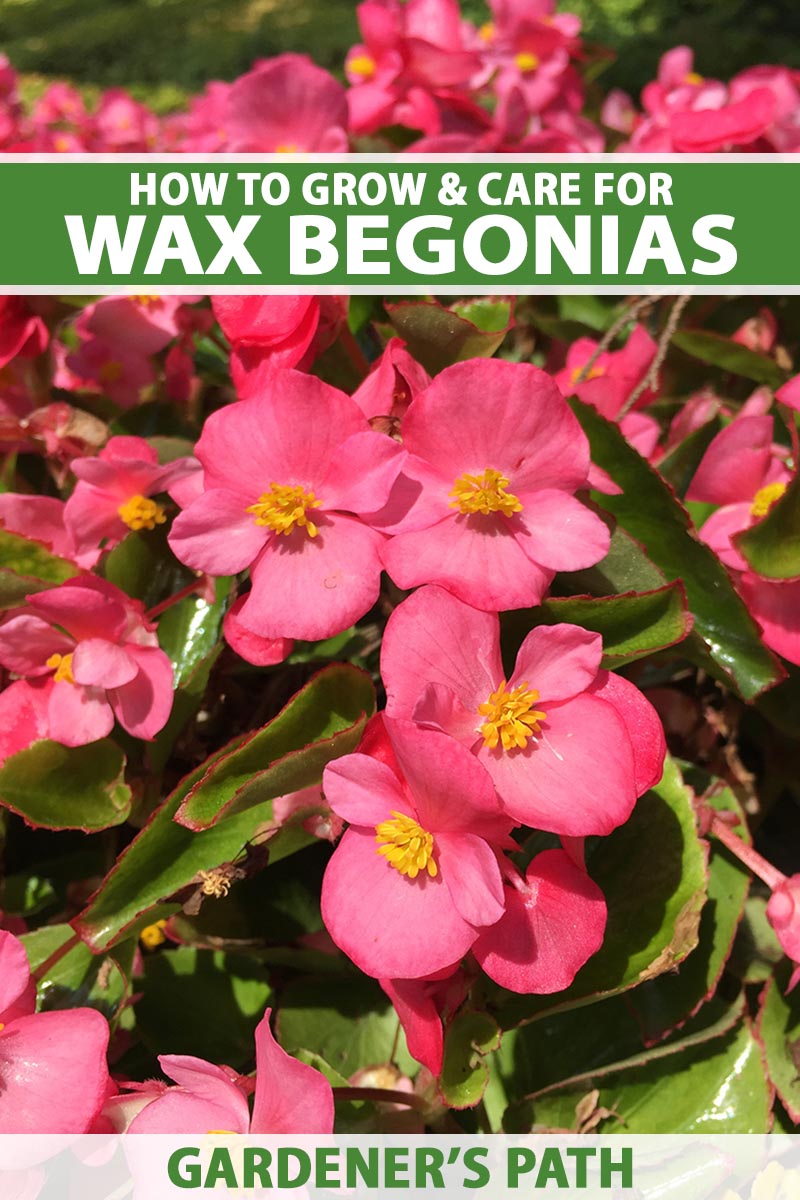
We link to vendors to help you find relevant products. If you buy from one of our links, we may earn a commission.
You may have heard of this kind of flower already. For many gardeners, Begonia x semperflorens-cultorum is considered an old-fashioned clump of blooms from the good ol’ days.
Not that this should deter you or anything – I know I’m not the only fan of the classics!
I mean, it’s hard to beat these sweet little plants when you’re looking for a space-filler that adds a generous dose of floral color.
And while some varieties have green foliage, the types with bronze to dark reddish leaves add another eye-catching punch of contrast to flower beds.
In this guide, we’ll break down everything a wax begonia grower needs to know, from propagation to cultivation. By its end, you’ll have another beauty to add to your floral lineup.
Here’s just what we’ll be getting into:
What You’ll Learn
What Are Wax Begonias?
With over 2,000 diverse species of tropical and subtropical plants in the Begonia genus, classifying and telling apart different kinds of begonias can be tricky, so a bit of clarification is definitely in order.
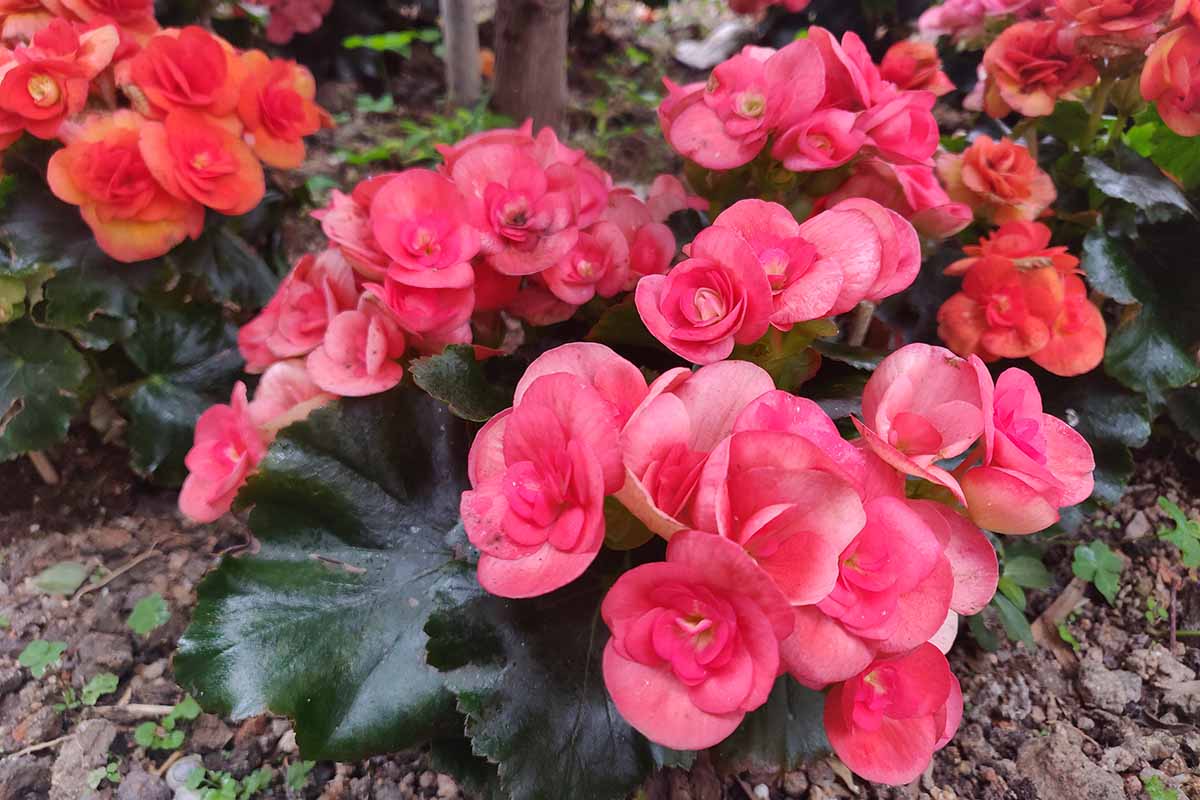
The American Begonia Society has informally classified begonias into eight different groups: cane-like, rex-cultorum, rhizomatous, semperflorens, shrub-like, trailing or scandent, thick-stemmed, and tuberous.
Wax begonias belong to the semperflorens, or “always-flowering” group.
Also known as club or fibrous begonias – the latter is a nod to their root systems – wax begonias are hybridized crosses of many different begonia species and cultivars.
B. cucullata is a notable parent species of B. x semperflorens-cultorum, along with B. subvillosa, B. schmidtiana, B. roezlii, C. foliosa, and B. gracilis.
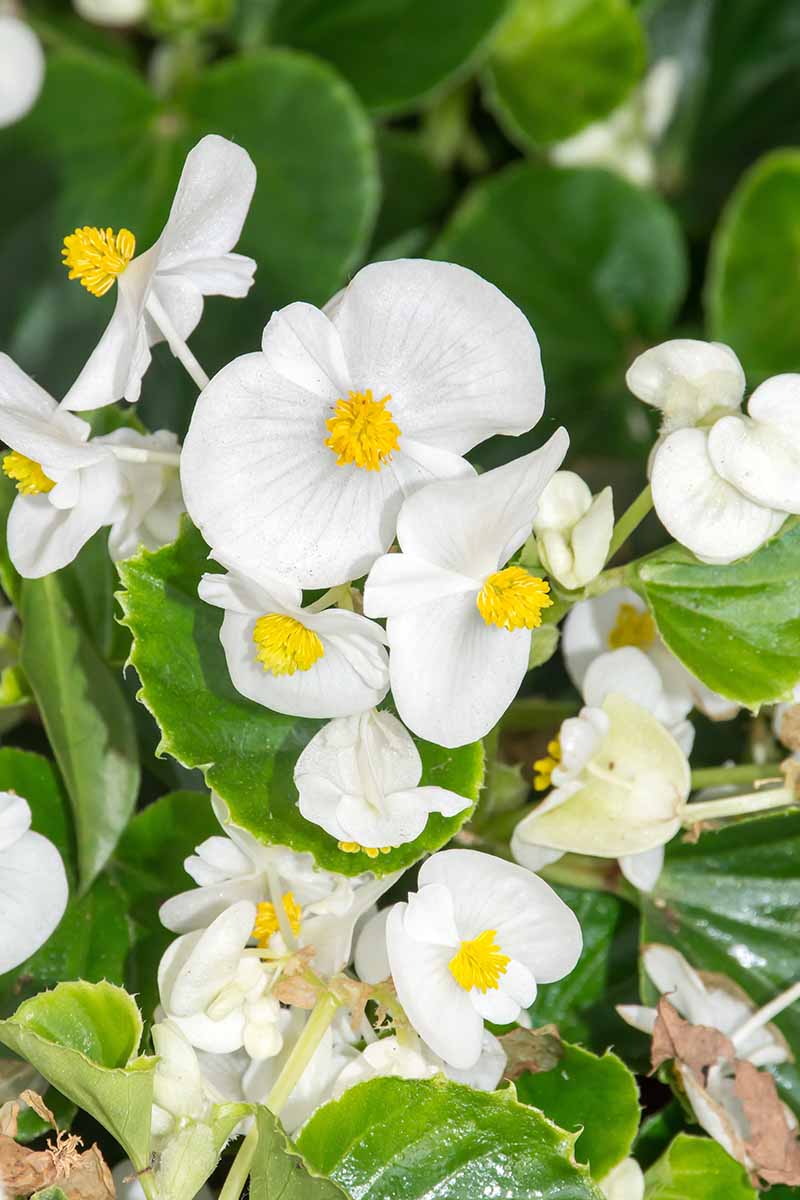
These hybrids are grown as annuals throughout most of the United States, but they can actually survive year-round as tender perennials in USDA Hardiness Zones 10 to 11.
They grow in small, mounding clumps that reach anywhere from six to 18 inches tall and six to 12 inches wide.
These plants have waxy, finely-serrated, and glossy-surfaced leaves with a round, hooded shape.
Growing from fleshy stems, this foliage can sport dark green to bronze to dark reddish hues, and some varieties can even exhibit white variegation!
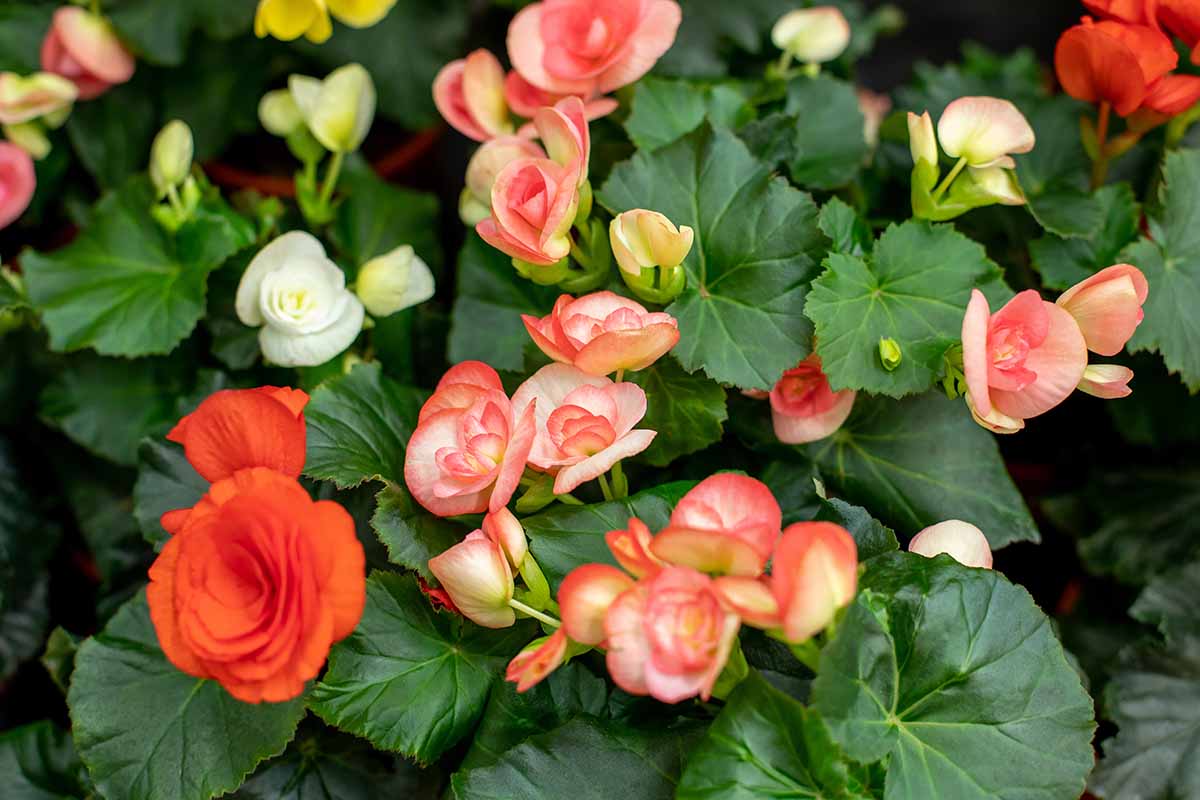
Wax begonias put out single or double blooms on loose flower clusters, or cymes. With gorgeous shades of white, red, and/or pink, the petals may either be bicolored or just a single hue.
These flowers also have a rather lengthy blooming period, emerging in late spring and persisting up until the first frost in fall.
Containing toxic calcium oxalates, the roots of these plants can actually cause vomiting and salivation if consumed, so make sure no one in your landscape – human or pet – goes a-munchin’!
Cultivation and History
You may have heard of wax begonias described as B. semperflorens, but this is actually a misnomer for the South American-native plant that ended up being reclassified as B. cucullata.
Taxonomists have since dropped the B. semperflorens nomenclature, but because the name has persisted in gardening circles, it’s essentially synonymous with “wax begonia.”
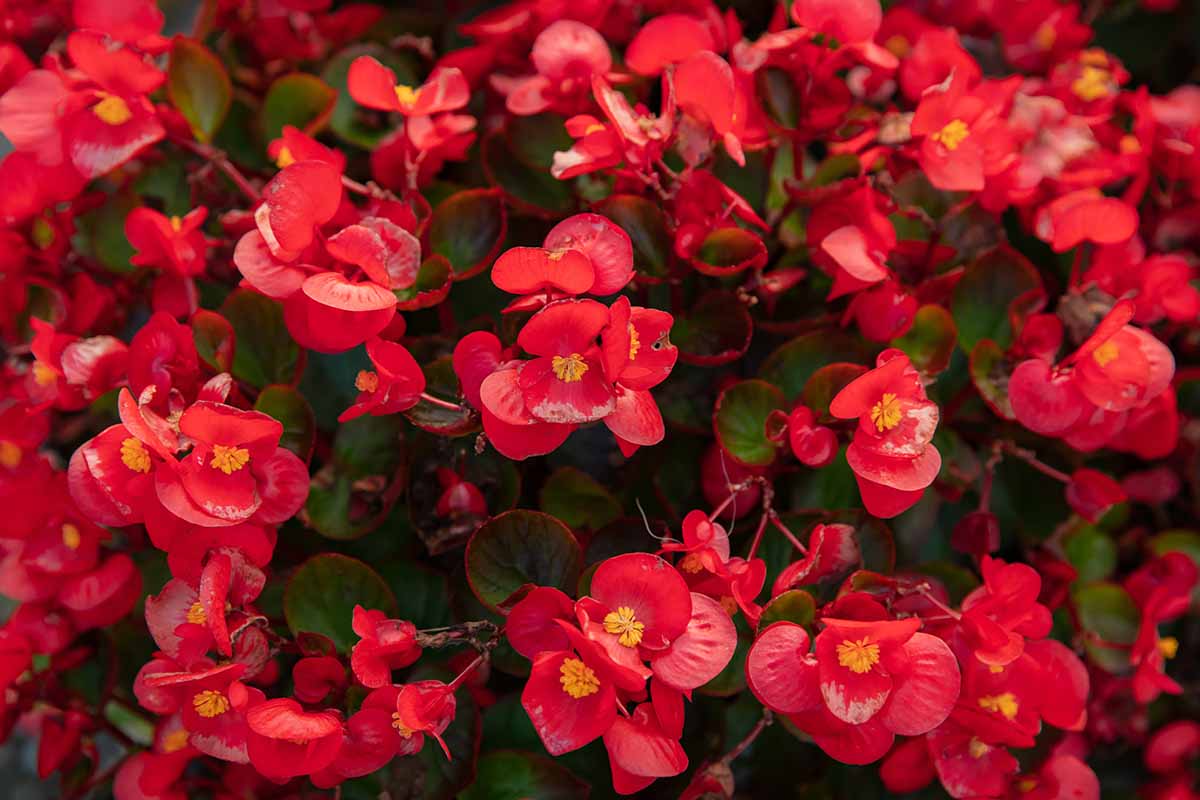
A variety of B. cucullata – the OG wax begonia, if you will – was the first commercially-introduced wax begonia, way back in 1945.
The name “semperflorens-cultorum” was coined to describe this new, ever-flowering group of hybrids, and the rest is history.
B. x semperflorens-cultorum has since taken the world by storm: as of 2012, it was the most widely-grown begonia in the world.
In 2009, its total production value was 36 million dollars in the United States, making it the country’s fourth most popular bedding plant at the time.
Wax begonias remain beloved thanks to their compact size, uniform growth, heat tolerance, and long blooming period.
But enough talk – it’s time to learn how to grow and care for these beauties yourself!
Wax Begonia Propagation
When it comes to wax begonia propagation, you’ve got three potential avenues to take: sowing seeds, taking stem cuttings, or straight-up transplanting.
From Seed
You can gather wax begonia seeds, but I wouldn’t recommend it.
Since the seeds of a wax begonia are practically dust-like in their natural state, utilize pelleted ones instead to make them easier to see, handle, and sow.
Once you’ve purchased your pelleted seeds, you’ll want to sow them about 12 weeks before your area’s final frost date in spring.
In a tray of individual cell packs, fill each flat with a 50:50 mix of peat moss and perlite. Press a seed or two into the surface of the media in each cell, leaving the seeds uncovered.
Gently moisten the soil, then cover the tray with clear plastic wrap. Place the tray near a sunny window, and provide bottom heat if ambient temperatures are below 70°F.
For a heat mat with a six-foot power cord that’s available in three different sizes, check out Gardener’s Supply.
Be sure to keep the media around the seedlings moist. After the seeds germinate, in three to four weeks or so, remove the plastic wrap and bottom heat.
Once the seedlings develop a set of true leaves, they can be moved into their own three-inch containers, each filled with similar media as the tray. Place the containers near a sunny window and continue to keep the medium moist like before.
After the last frost comes to pass, leave the containers outside for 30 to 60 minutes before bringing them back inside.
Add an additional half hour to a full hour of outdoor exposure time each day until your seedlings can spend a full day outside. At that point, they’re ready for transplanting!
From Stem Cuttings
In spring or summer, select a healthy-looking stem, one with several nodes and no flowers or flower buds.
Take a cutting three to four inches in length, making your cut about half an inch below the lowest node.
Remove the leaves from the cutting’s lower half, and submerge the de-leafed section in a tall, narrow container of water. Keep the cutting in a warm, well-lit spot indoors.
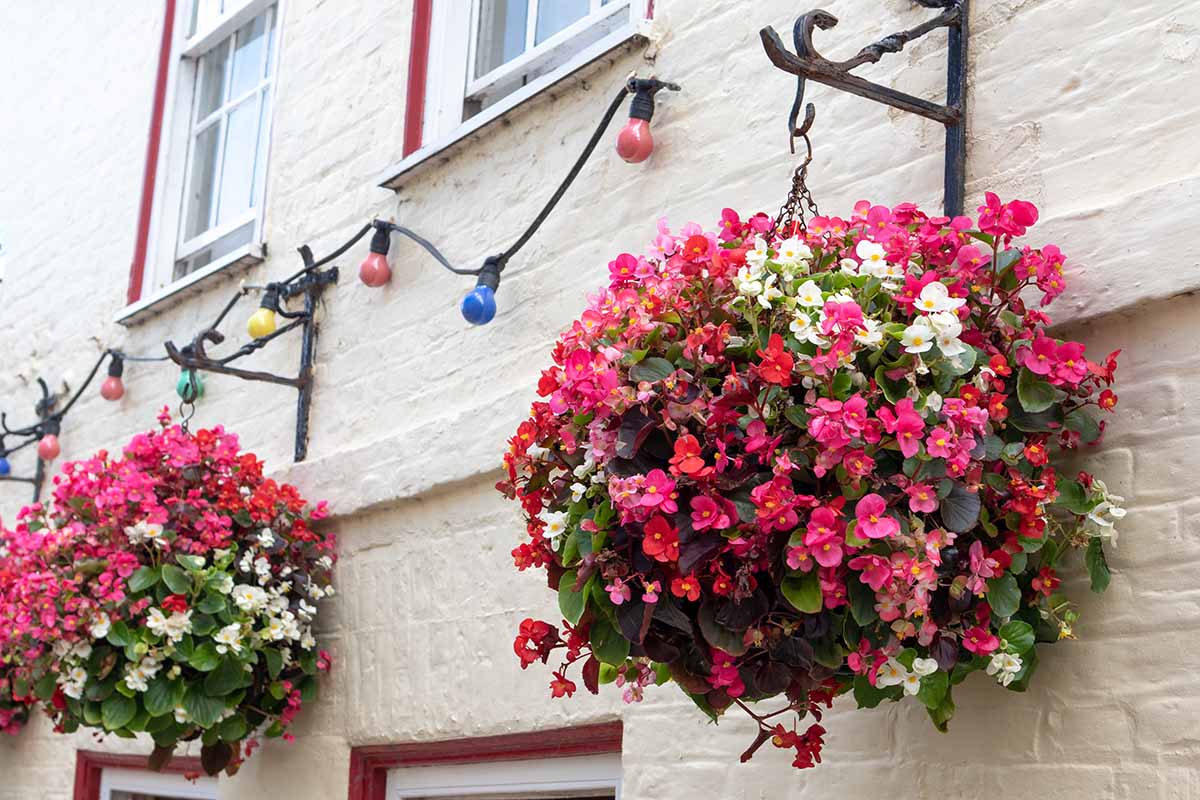
When the roots are about an inch long, you can transplant the cutting into a three-inch container filled with a 50:50 mix of peat moss and perlite. Bury at least one node, and moisten the soil.
As the cutting continues to grow, keep their media moist and repot as necessary.
When the cutting is five to six inches tall and all danger of frost has passed, it’s ready for hardening off outdoors with a similar protocol to what you’d use for seedlings.
Now, it’s transplanting time!
Via Transplanting
Fortunately, it’s very easy to find this plant at garden centers, if taking cuttings isn’t your speed.
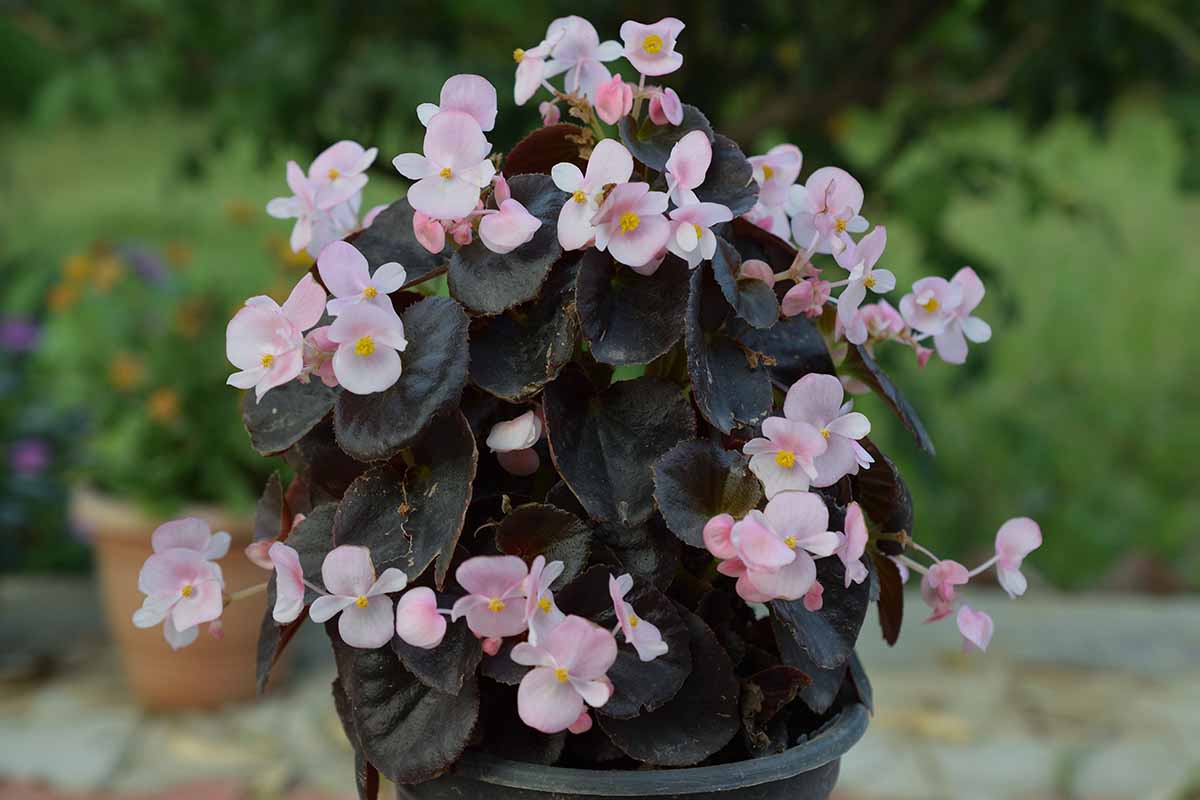
Prepare fertile and well-draining planting sites outdoors with a pH of 5.5 to 6.5, spaced about six to eight inches apart.
Dig holes that are about as deep as the transplants’ root systems, and just a bit wider.
We’re looking at similar digging suggestions for container-grown transplants, and similar media recommendations, too: a mix that’s fertile, well-draining, and just a bit acidic.
But instead of garden soil, you’ll be using a 50:50 mixture of peat moss and perlite.
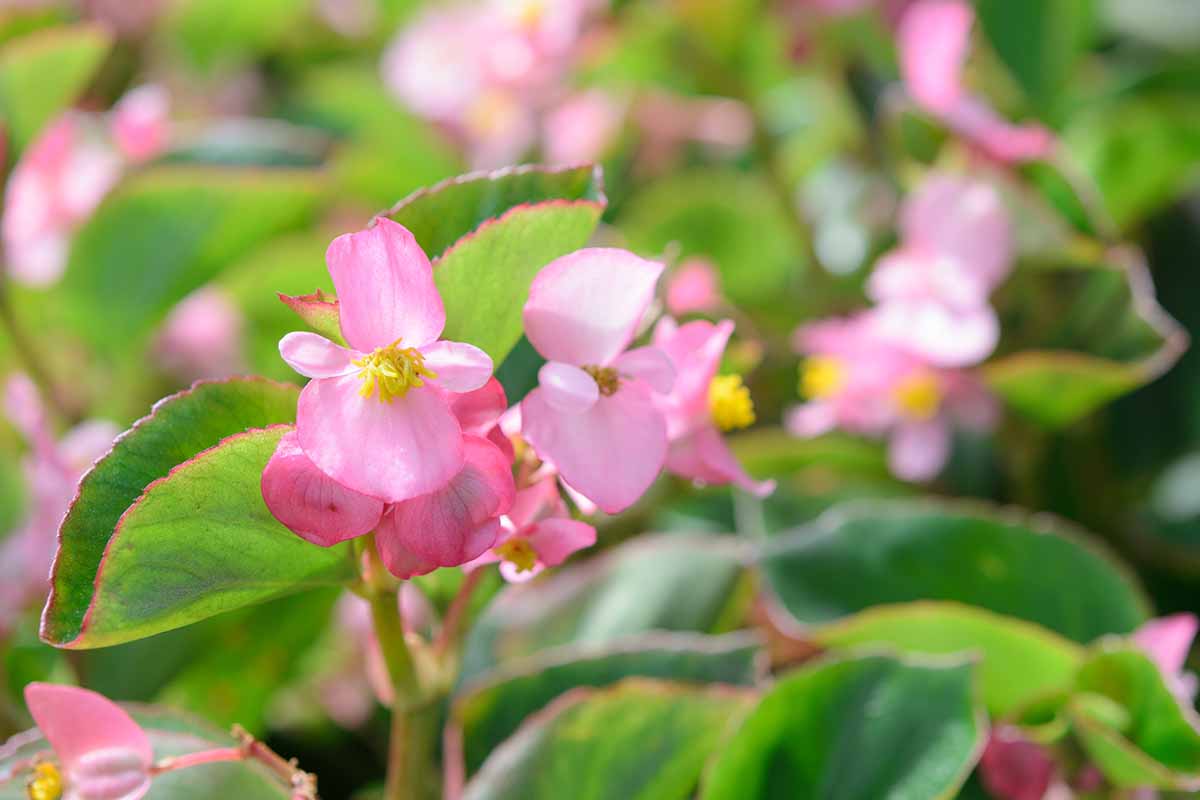
As for the actual containers, select ones about an inch or two wider in diameter than the transplants’ root systems.
Ceramic containers work nicely. Don’t forget the drainage holes at the bottom, though!
Gently ease your transplants from their containers, lower them into their planting holes, and backfill with adjacent soil.
Water in the transplants, and keep the surrounding medium moist as they grow and develop.
How to Grow Wax Begonia Plants
Now it’s time for the easy part of growing wax begonias: the day-in and day-out cultivation.
If you’re gardening in a climate that’s colder than that of USDA Hardiness Zones 10 to 11, then your wax begonias will either have to be grown as annuals, or brought indoors for the winter.
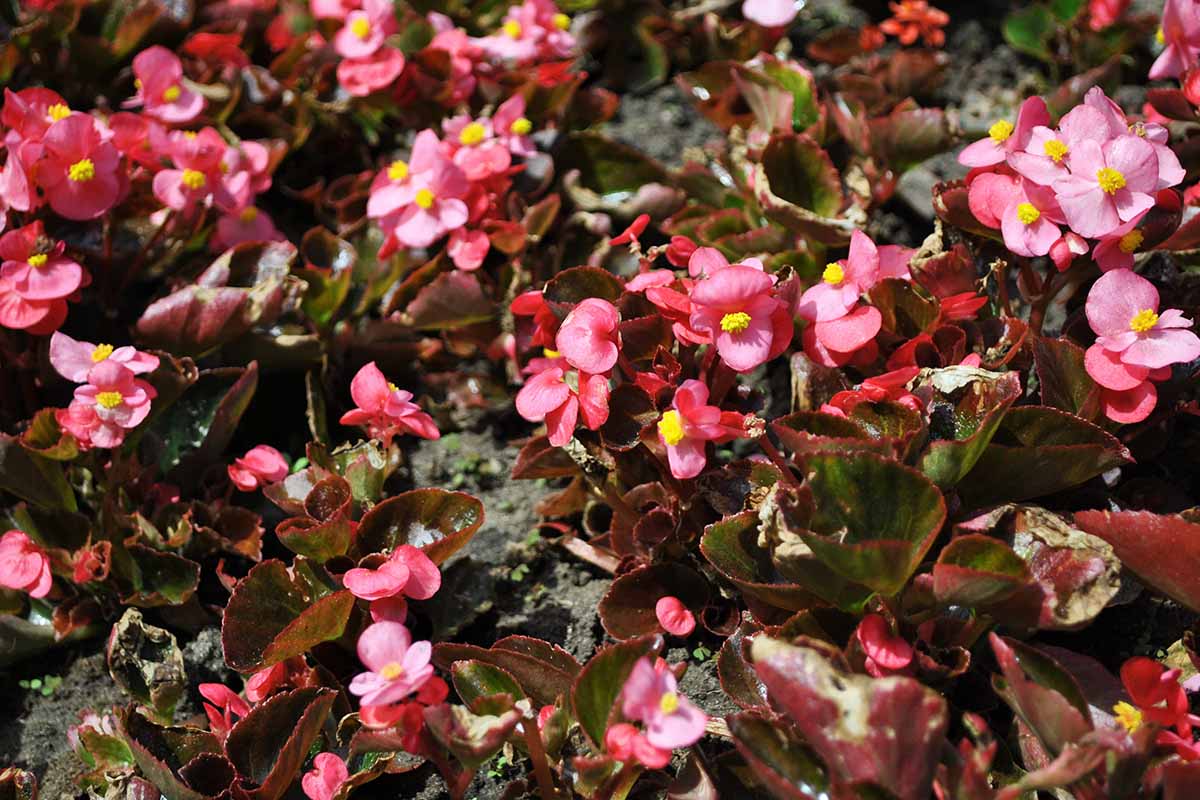
In the more northern regions of the US, plant wax begonia in full sun, and keep in mind that varieties with bronze foliage tend to do better in full sun than those with greener leaves.
Gardeners in the south may need to give these plants some afternoon shade. Full shade is actually tolerable, but flowering will be hindered and less prolific as a result.
Stick with partial shade or dappled sun exposure as needed for best results – don’t be afraid to move a wax begonia if flowering is subpar or if the leaves start to exhibit scorching.
It’s important to provide ample drainage for wax begonias, since oversaturated soils can lead to disease. High soil fertility is preferable as well, along with a pH of 5.5 to 6.5.
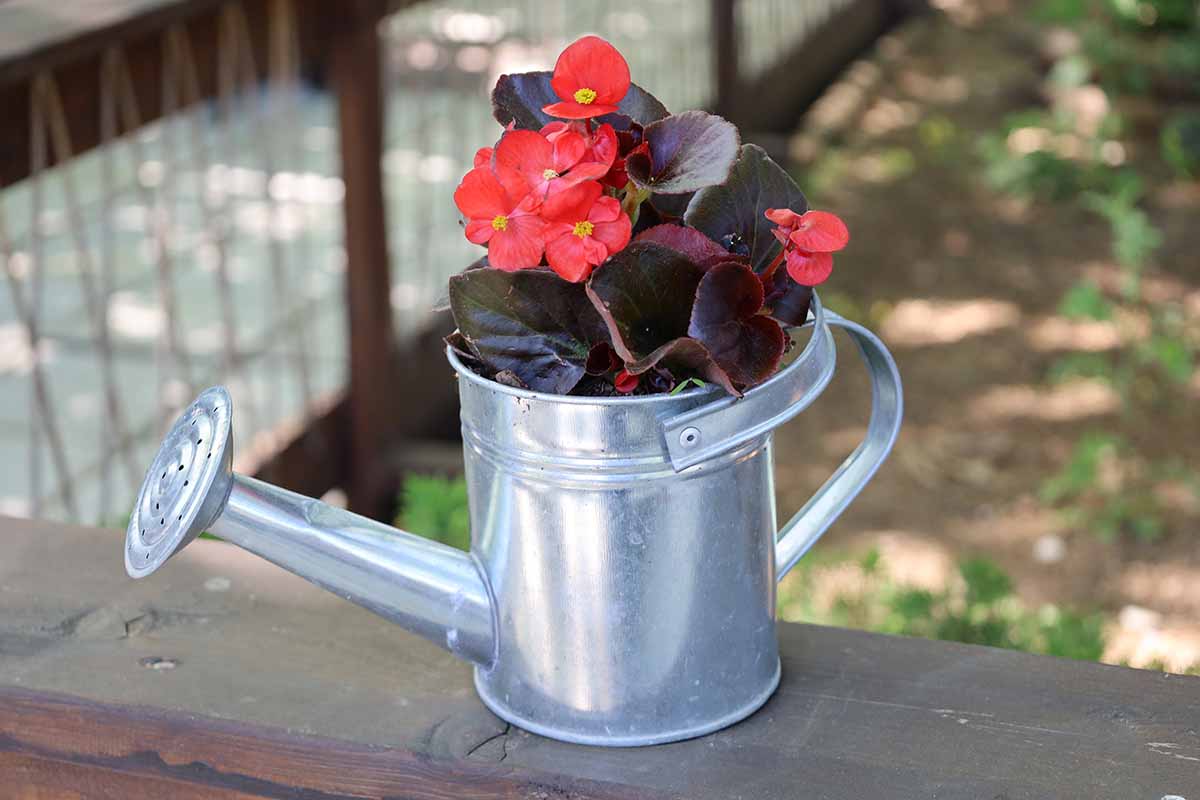
For optimal growth, be sure to keep the soil moist, especially with full sun exposure.
To avoid splashing the foliage with water and increasing the odds of disease occurrence, water the plant at its base.
But don’t worry if you ever slack on watering – this plant can actually handle moderate amounts of drought once established.
Fertilize every two to four weeks during the growing season with a 10-10-10 NPK liquid fertilizer.

For potted plants, we like this fertilizer from Bonide, available on Amazon. Water the plants before and after applying the fertilizer.
Growing Tips
- Full sun to partial shade is best, depending on climate.
- Make sure the soil drains very well.
- Keep the soil moist for optimum growth.
- Begonias can also be grown as houseplants and we have seperate guide for that.
Pruning and Maintenance
Begonias don’t require a ton of maintenance. You’ll want to deadhead spent blooms to encourage more flowers, and you should regularly pinch the stems back if you want bushier plants.
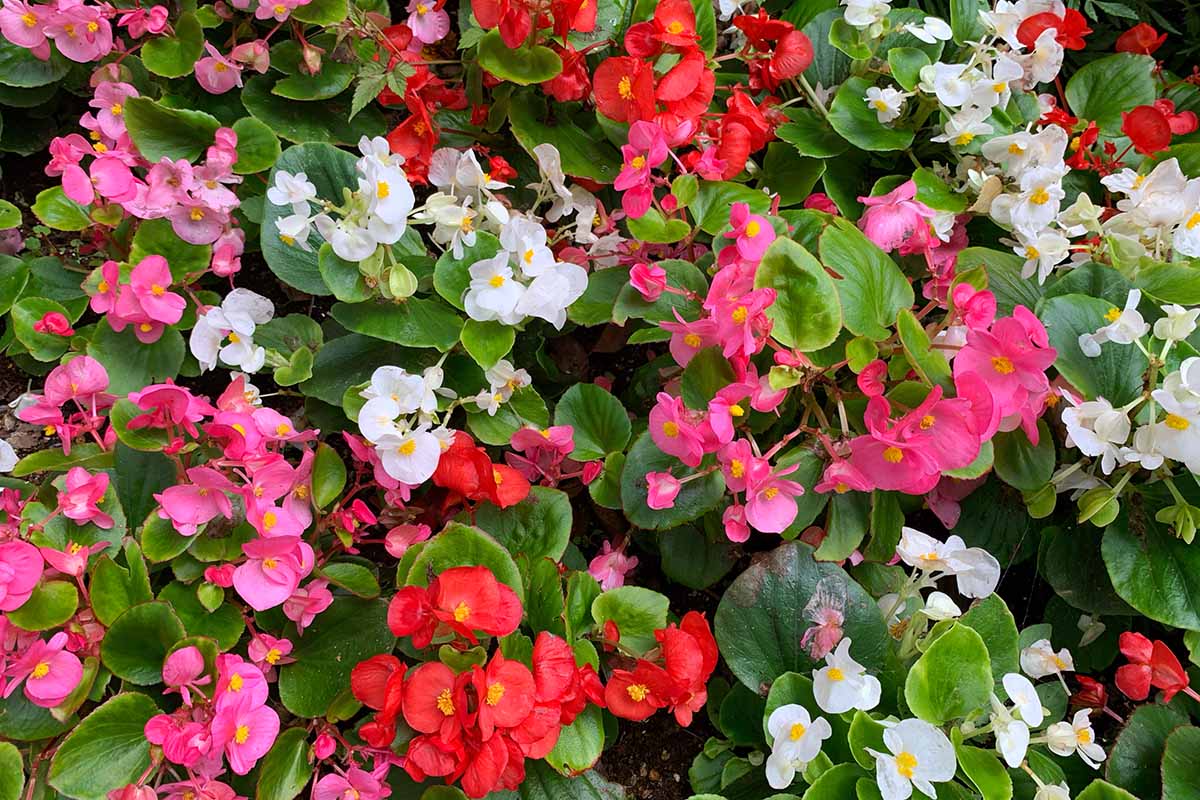
If you wish to grow your wax begonias for more than a single year in colder climates, cut the plant back, dig it up, and transplant into a container to bring inside and enjoy indoors over the winter.
Set the plant near a sunny window, and keep the media moist.
Wax Begonia Cultivars to Select
The number of commercially available cultivars is quite expansive. If you need help in narrowing down your options, these are some solid choices:
Ambassador White
Ambassador ‘White’ flaunts especially large, pure white flowers atop rich green foliage.
Reaching heights of six to eight inches and spreads of 10 to 12 inches at maturity, this cultivar’s prominent blooms and simple color scheme make a bold, yet humble statement.
If you’re not feeling white, the Ambassador series also includes pink- and red-flowered options, as well as bicolored and mixed ones.
Cocktail Gin
A beautiful variety with pretty pink flowers, Cocktail ‘Gin’ reaches a mature height of eight inches with a spread of 10 inches.
With coppery-bronze leaves, members of the Cocktail series thrive with full sun exposure.
With hints of red in both the blooms and the foliage, these give off a fiery aura in the landscape.
If you’re interested, you can purchase some pelleted Cocktail ‘Gin’ seeds – as well as other Cocktail varieties – from True Leaf Market.
Harmony Scarlet
Rounding out our list with bright red blooms, Harmony ‘Scarlet’ is a bronze-leaved variety with a mature height and spread of up to eight inches.
Along with the other members of the Harmony series, this cultivar has especially sturdy flowers that will still bloom vibrantly in spite of heat and rain.
Managing Pests and Disease
Let’s discuss some potential threats to a wax begonia’s health, shall we?
Herbivores
Great news: herbivores aren’t a huge concern with wax begonias. These plants are actually resistant to rabbits and deer!
Insects
Luckily, B. x semperflorens-cultorum doesn’t typically suffer from serious insect problems. But annoying ones? Most definitely a possibility.
Here’s a fun fact-slash-tip: by cracking down on unwanted insects, you can also crack down on unwanted disease, since some bugs actually vector pathogens!
Mealybugs
Covered in a white and mealy wax, mealybugs are small, soft-bodied insects that measure less than a fifth of an inch long.
Forming clustered colonies on infested stems and leaves, mealybugs suck the sap from infested tissues, which can stunt the plant’s growth.
They also excrete honeydew, which can attract ants and lead to sooty mold infection.
To manage mealybugs, you’ll need to check your plants for them regularly. Once you spot these pests, get rid of them by dipping cotton swabs in rubbing alcohol, then applying the swabs directly to the bugs.
Sprays of insecticidal soaps and horticultural oil work to eradicate them as well.
For a homemade DIY concoction, you can fill an old spray bottle with a mixture of dish soap and water – add one tablespoon of soap per quart of water – then spritz it directly onto infested plant surfaces.
Learn more about mealybugs in our guide.
Thrips
Ranging in hue from translucent yellow or white to dark brown or black, thrips are tiny, slim insects that sport fringed wings.
With their specialized mouthparts, thrips pierce leaves to feed, leaving discolored feeding marks and black frass in their wake.
Along with the physical feeding damage, plants can exhibit silvering in the foliage and overall stunted growth.
And sometimes, the damage doesn’t become apparent until after the thrips are gone, making control a bit of a challenge.
Daily inspections or putting out yellow sticky traps can help you spot these pests in time to take action.

If you happen to see thrips, you can use an insecticidal soap such as this 24-ounce, ready-to-use spray from Garden Safe, available on Amazon.
You can learn more about controlling thrips in our guide.
Disease
Just like in a hospital, diseases can easily spread if conditions aren’t kept sanitary.
This means sanitizing your tools, using pathogen-free plantings, and only growing your plants in disease-free mediums.
Botrytis Blight
A disease that affects many different herbaceous and woody perennials, botrytis blight is caused by fungi from the Botrytis genus.
Overwintering in nearby plant detritus, fungal sclerotia form spores in springtime, which spread via wind and water to infect plants at vulnerable points such as dead, injured, and/or softened tissues.
Also known as gray mold, botrytis blight can cause abnormal development, browning, spots, and irregular flecks in flowers, flower buds, and leaves.
Older flowers may quickly rot, while infected tissues can become coated with a trademark gray mold, especially after periods of cool and damp weather.
To prevent Botrytis blight, avoid overcrowding specimens, clean up nearby plant debris such as fallen leaves and twigs, avoid excess nitrogen fertilizer, and don’t water plants from overhead.
If you so desire, applying fungicides in advance can protect plants from the get-go. For some help in preventing fungal resistance to any one fungicide that you use, our guide on the subject has some useful tips for you.
If infection occurs, remove infected tissues and destroy them, along with entire plants that are too far gone.
Powdery Mildew
Caused by a variety of different fungal pathogens, powdery mildew causes infected leaves to accumulate an unsightly gray to white powder.
Infected leaves may be shrunken, curled, or chlorotic, or they may drop off entirely as the disease progresses. Flowers can become deformed as well.
Overwintering as mycelium in leaf detritus, the fungus releases conidia spores in humid and warm springtime conditions. Powdery mildew spores can actually germinate sans free moisture, facilitating spread.
Many Botrytis blight prevention practices can work to prevent powdery mildew. Planting in full sun exposure is another effective prevention technique.
Be sure to prune away infected tissues!
Read our guide to learn more about powdery mildew and how to control it.
Stem Rot
Stem rot typically results from a combination of overwatering and the fungus-like oomycete Pythium ultimum.
Infected stems darken, become water-soaked, and eventually flop over. Not a good look.
Prevention-wise, it’s especially important to avoid excessive irrigation and oversaturated soils.
Infected specimens should be removed and destroyed, and the soil in the planting area should be replaced or sterilized prior to reusing the site.
Best Uses for Wax Begonia Flowers
When it comes to landscape utility, the wax begonia is quite versatile.
Whether you opt to use them in borders, set them in window boxes, place them along walkways, display them in patio containers, or put a whole bunch of ’em together to plant en masse, you have a lot of options.
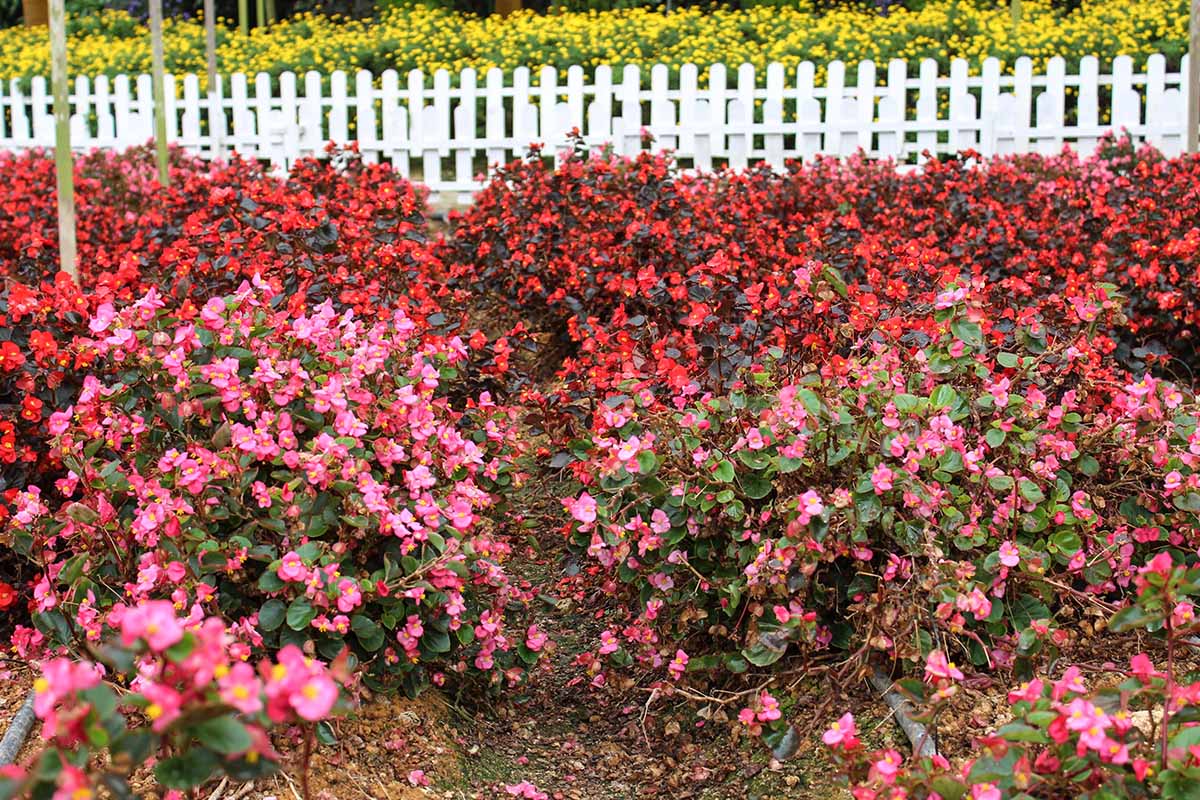
Carpet bedding is another aesthetic application. Intricate, tapestry- or carpet-like designs can be made by putting varieties of Begonia x semperflorens-cultorum together, whether with cultivars in different colors or with other low-growing plants.
Need companion plantings for wax begonias? Try coleus, dusty miller, Boston fern, or even petunias!
Quick Reference Growing Guide
| Plant Type: | Tender perennial flower, grown as an annual | Flower/Foliage Color: | Pink, red, white, bicolor/bronze, red, green |
| Native to: | South America (parent species) | Maintenance: | Low |
| Hardiness (USDA Zones): | 10-11 | Tolerance: | Deer, full shade, heat, heavy shade, juglone toxicity, moderate drought, rabbits |
| Bloom Time: | May to October or first frost | Soil Type: | Fertile, moist |
| Exposure: | Full sun to partial shade | Soil pH: | 5.5-6.5 |
| Time to Maturity: | 19 weeks to flower from seed | Soil Drainage: | Well-draining |
| Spacing: | 6-12 inches | Attracts: | Butterflies, bees |
| Planting Depth: | Depth of root system (transplants) | Companion Planting: | Boston fern coleus, dusty miller, petunias |
| Height: | 6-18 inches | Uses: | Borders, carpet bedding, containers, edges, mass planting |
| Spread: | 6-12 inches | Family: | Begoniaceae |
| Water Needs: | Moderate | Genus: | Begonia |
| Common Pests and Diseases: | Mealybugs, thrips; botrytis blight, powdery mildew, stem rot | Species: | Semperflorens-cultorum hybrids |
What’s Old Is New Again
Does this old-fashioned charmer deserve a place in modern gardens? We think so!
Its delicate flowers and attractive foliage make a bold statement, and are well worth including in a border or a specimen grouping.
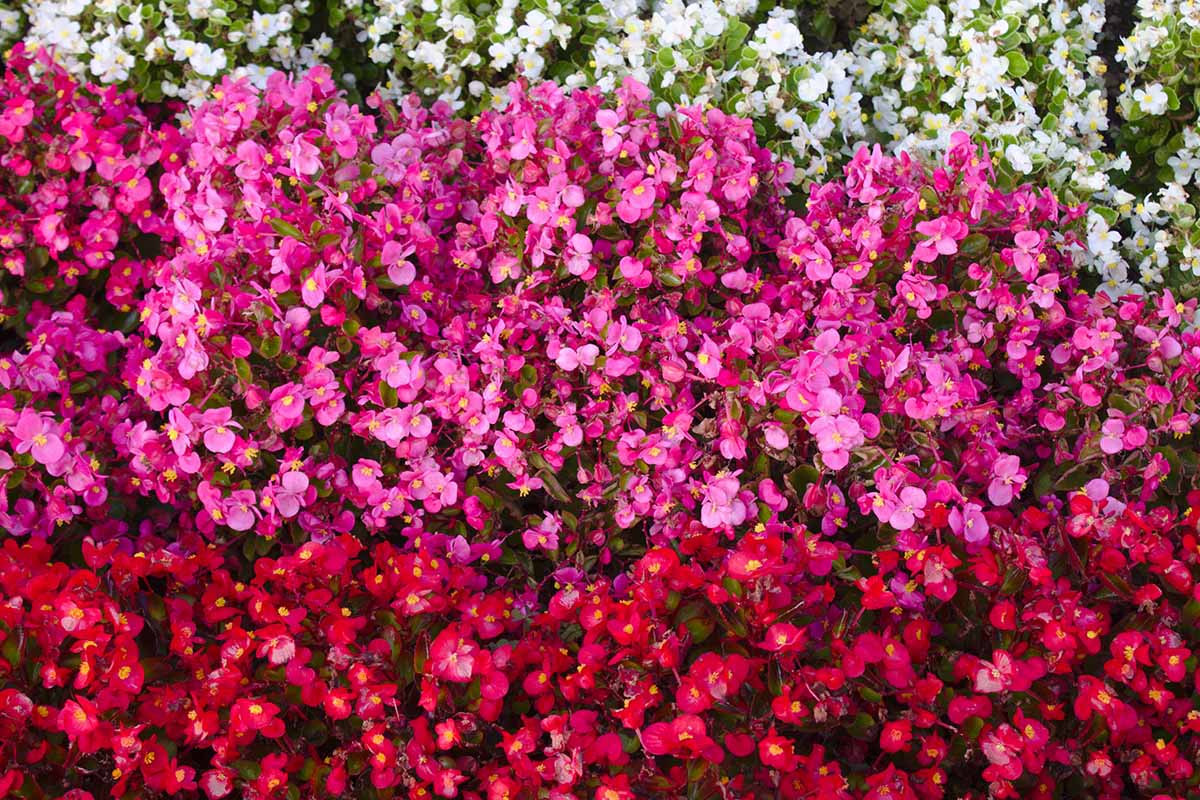
“Borrow” a cutting from a neighbor (with permission!), root it, plant it, bring it indoors to overwinter, and then replant in the spring. It’s the plant that keeps on giving.
Do you grow wax begonias? What are your favorite varieties? Tell us in the comments section below!
if you’re looking for more old-fashioned flowering plants that are at home in the modern garden, check out these guides next:
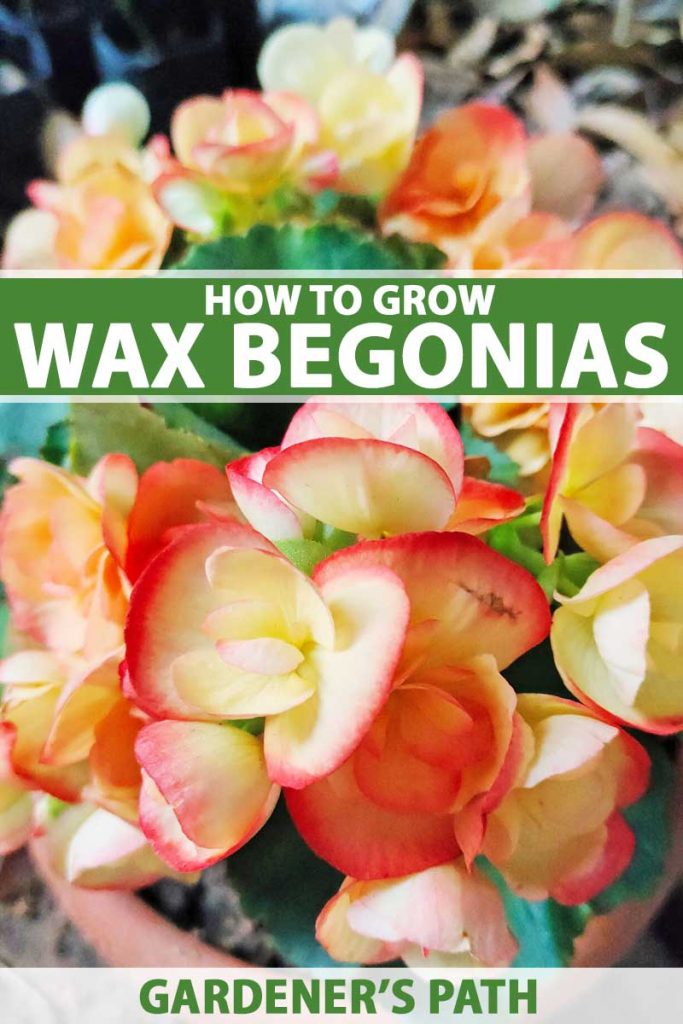
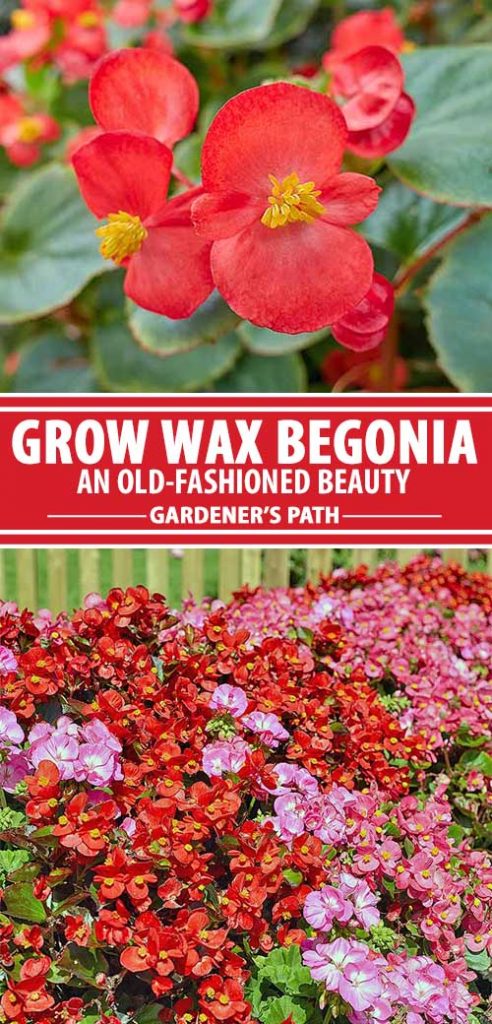
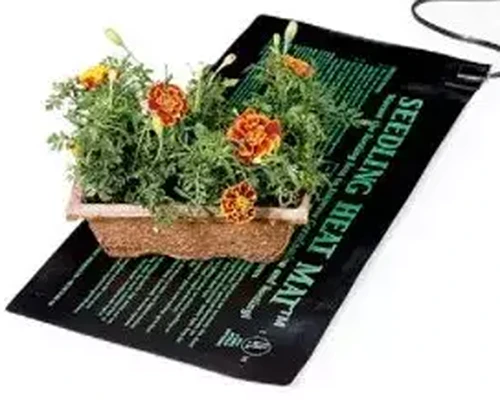
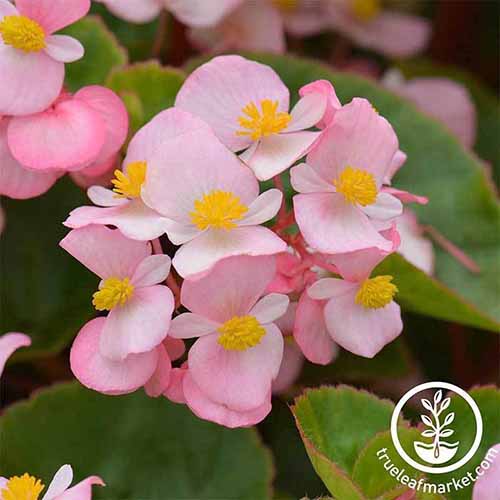
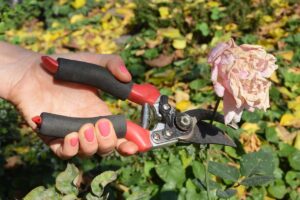
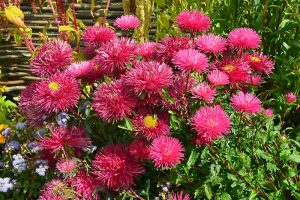

In our zone 11 coolish climate these plants invade everywhere 365 days a year. A bird or wind brought a seed or a chunk of a plant to my yard and in a couple years I have them everywhere flowering 365 days.